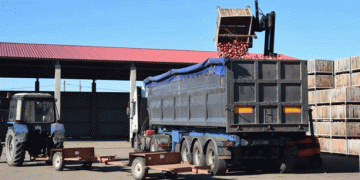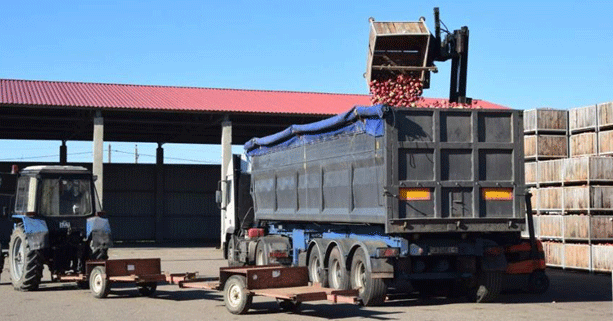As the colder months approach, efforts in the Grodno region of Belarus are in full swing to prepare for the off-season by establishing stabilization reserves of essential fruits and vegetables. These reserves are crucial in maintaining a consistent supply of affordable and high-quality produce during winter and early spring. Let’s dive into the latest data and see how this ambitious endeavor is progressing.
Building the Stabilization Fund
By December 1, 2023, Grodno region plans to store:
- 4,209 tons of potatoes
- 2,213 tons of white cabbage
- 1,169 tons of carrots
- 648 tons of table beets
- 1,168 tons of onions
- 2,887 tons of apples
The purpose of this initiative is to ensure local consumers have access to nutritious, reasonably priced produce year-round. According to Evgeny Khokh, a lead specialist in crop management for the Grodno Regional Executive Committee, stabilization funds are vital for food security, providing reassurance to citizens and stabilizing prices.
Where and How the Harvest Is Stored
One of the standout agri-enterprises contributing to this effort is OAO “Vasilishki” in the Shchuchin district, renowned for its advanced storage facilities. These fruit and vegetable stores, with a total capacity of 3,000 tons, feature cutting-edge climate control systems that keep temperatures between 0°C and 5°C. Inside, there are 16 massive chambers, each nine meters high, capable of holding up to 200 tons of produce.
Natalya Zholik, the facility manager, proudly shows off their reserves. “We’ve already completed the storage of 560 tons of onions and are well into storing over 600 tons of carrots, aiming for 800 or even 1,000 tons,” she states. They’ve also stored 1,600 tons of apples, a portion of which is destined for processing, retail, or local markets.
The harvest has been exceptionally fruitful this year, thanks to favorable weather conditions and adherence to modern agricultural practices. For example, the farm’s cabbage yields are projected at a record 900 quintals per hectare, far exceeding expectations. However, efficient storage is crucial to maintain this high-quality produce until the off-season ends.
The Human Element
The success of these operations is also due to the people working tirelessly behind the scenes. Workers like Sergey Saleyko, a young tractor driver, and Irina Bogdevich, a long-time auxiliary worker who returned post-retirement, exemplify the dedication required for a robust agricultural sector. Temporary laborers from surrounding areas, like Shchuchin, also lend a hand to ensure the harvest beats the first frost.
The Bigger Picture
As of October 21, progress in filling the stabilization fund is on track:
- 67% of apples
- 71% of potatoes
- 54% of onions
- 56% of carrots
- 21% of table beets
- 13% of cabbage
The latter figures reflect the staggered harvesting schedule, with cabbage collection only just beginning. All products stored will be used from December onward, distributed through agricultural enterprise networks, large retail chains, and even local schools and kindergartens.
The meticulous planning and execution involved in setting up these stabilization funds highlight the importance of agriculture to the Grodno region and Belarus as a whole. This effort not only ensures a stable food supply but also protects consumers from price spikes during the winter. As farms like OAO “Vasilishki” wrap up their storage activities, it is clear that local agriculture will continue to play a pivotal role in the nation’s food security.































